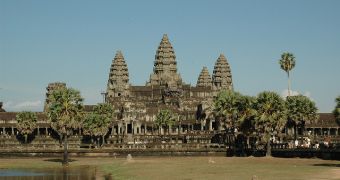Some days ago, the news broke that an ancient city by the name of Mehendraparvata had been discovered by a team of archaeologists that used state-of-the-art technology to map Cambodia's Siem Reap region.
As reported at that time, the remains of this long-lost city have spent the past 1,200 years hidden beneath the Cambodian jungle.
Ironically enough, they are located at a distance of just 25 miles (40.23 kilometers) west of the famous temple complex of Angkor Wat.
However, researchers only became aware of their existence in April 2012.
Recent information on this topic says that the city was discovered with the help of a so-called lidar instrument.
This instrument bounces some 200,000 laser pulses per second off the ground, and made it possible for the archaeologists to map about 143 square miles (370 square kilometers) of what used to be Khmer territory, Nature reports.
This was possible because some of the laser blast penetrated the forest coverage and allowed specialists to piece together a map of the forest floor lying beneath them.
The archaeologists detail their findings in an article set to be published in an upcoming issue of the journal Proceedings of the National Academy of Sciences, and say that, according to the new data they have collected, the Khmer were not in the habit of building isolated urban clusters.
On the contrary, they very much preferred to live in a low-density suburban sprawl that encompassed relatively small areas providing accommodation for more people than was the norm, the same source informs us.
Thus, it appears that the core of this long-lost empire, which encompassed the newly found city, did not cover just 3.5 square miles (9 square kilometers), as was previously estimated, but spread over an impressive 13.5 square miles (35 square kilometers).
The archaeologists also say that, according to preliminary investigations, the newly discovered city of Mahendraparvata did not have well defined borders.
Furthermore, it was crisscrossed by numerous canals and other structures that allowed the Khmer to toy with the water resources they had at their disposal.
It is likely that their preference for overly engineered landscapes was what brought about the Khmer's demise.
More precisely, it appears that they abused their surrounding landscapes until they were no longer able to sustain them.

 14 DAY TRIAL //
14 DAY TRIAL //